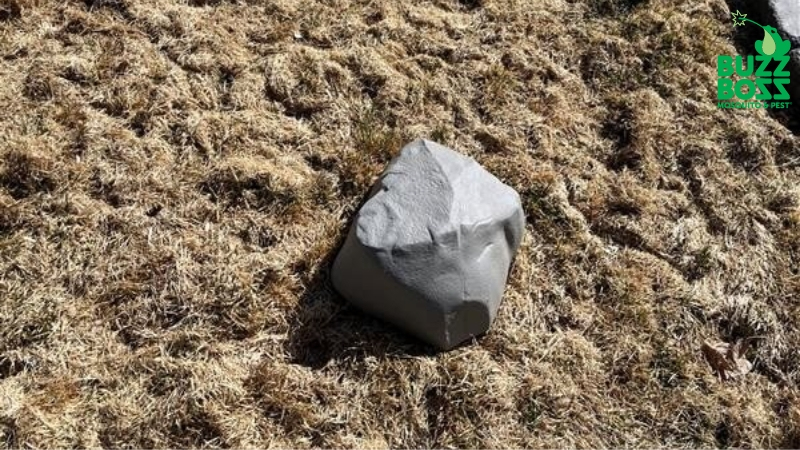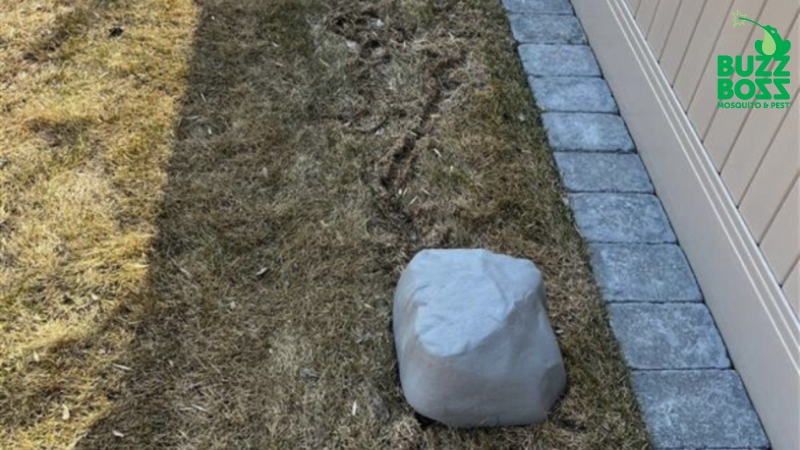10 Signs You Have Voles in Your Yard
Reading time: 5 minutesVoles, often mistaken for mice, are small rodents that can significantly impact your yard if left unattended. As winter ends, these creatures become more active, and their presence in gardens becomes more apparent.
Voles are notorious for damaging vegetation, gnawing on tree barks, and creating extensive underground networks that can disrupt your lawn’s root system. As the snow melts, that’s when you’re able to see the actual damage they’ve done to your lawn. This is the best time to assess and address potential infestations.

$447.00



OR Contact our office to discuss billing options!

Voles Habits and Habitats
Voles are busy little creatures. These small rodents have a high reproductive rate and can quickly populate your yard.
In residential areas, voles typically prefer spaces with plenty of cover. They love hanging out in thick grass, gardens full of weeds, and areas with lots of plant debris.
This environment provides them with many food options and keeps them hidden from predators. Voles choose these spots because they can create a network of tunnels and nests without being disturbed too much.
So, if your yard is a bit on the wild side, it might just be the perfect spot for voles to call home.
Signs You Have Voles in Your Yard
As winter ends and the snow melts away, you might start noticing these signs that mean you have voles in your yard:
1. Visible Runways
One of the most apparent signs of voles is their runways. These appear as narrow, cleared paths about one to two inches wide that weave through the grass and underbrush. Unlike moles, voles don’t create raised ridges. Their pathways are flat and visible, as they prefer to move through the grass, clipping it close to the ground. These runways act as main routes for the voles, connecting their burrows to their favourite food sources.

2. Damaged Vegetation & Other Material
Voles have a voracious appetite for plant materials, wood, and even cement! You may notice that the stems of grass and young plants appear sharply clipped at an angle. Flowers and decorative plants might seem as if they’ve been nibbled right down to the ground. Voles particularly target the roots and bulbs of plants, which can be devastating for your garden vegetables or cherished ornamental plants.

3. Burrow Entrances
Small holes in the ground, about the size of a golf ball, can often be seen leading to vole burrows. Unlike the mounded entrances created by moles, these entrances are typically clean, without piles of dirt around them. Situated strategically throughout their runway systems, these burrows clearly indicate a vole infestation.

4. Chewed Bark
Voles are known to gnaw at the bark around the bases of trees and shrubs, which can be severely damaging. This activity often results in narrow strips of missing bark around the trunk. In severe cases, it can completely encircle the trunk, a condition known as girdling that can disrupt the tree’s ability to transport water and nutrients and may even lead to its death.
5. Vole Droppings
Another indicator of vole activity is the presence of their droppings. These are small, granular, and dark brown, resembling tiny pellets. You may find them scattered along the runways, near feeding sites, or in sheltered spots where voles have been feeding or resting.
6. Grass Clippings and Debris Piles
Voles construct their nests using clipped grass blades, leaves, and other plant materials. If you find small piles of neatly clipped grass or other plant debris, especially near burrow entrances, it is likely a sign that voles are nearby and building nests.
7. Unusual Girdling on Trees
In addition to damaging the lower trunk of trees, voles can also girdle higher up. This can occur when snow cover allows them to reach higher on the trunk than usual. This damage appears as a distinct belt of missing bark, which can severely affect the tree’s health.
8. Sudden Plant Collapse
Occasionally, you might find plants in your garden suddenly wilting or collapsing. This can be caused by voles chewing through the roots below the surface, which disrupts the plant’s ability to uptake necessary water and nutrients.
9. Tracks in Snow or Mud

After a snowfall or rain, tiny tracks or narrow pathways in the snow or mud may become visible. About 1 to 2 inches wide, these tracks offer clear evidence of vole movements across your yard.
10. Noises Underneath the Ground
Less obvious but still indicative of vole presence are faint noises, such as rustling or gnawing sounds coming from beneath the ground. These sounds suggest that voles are active below the surface, busy creating or expanding their underground habitats.
The Impact of Vole Activity on Your Yard
Vole activity can cause serious damage to your yard, affecting the aesthetics and health of your landscape. These small rodents are not just a nuisance; their feeding habits and burrowing can lead to long-term damage to lawns and gardens.
Voles feed on a variety of grasses and roots, which can cause unsightly patches and uneven turf in your lawn. Their penchant for chewing on roots can also weaken plants, making them more susceptible to disease and reducing their ability to thrive.
The impact on trees, particularly young saplings, can be even more devastating. Voles target the bark and roots of trees, which are crucial for nutrient transport throughout the plant. When voles girdle a tree by removing the bark in a complete ring around the trunk or roots, it disrupts this nutrient flow, essentially starving the tree.
Young trees are especially at risk, as their thinner bark makes them easier targets. If the damage encircles the trunk, it can be fatal.

How to Prevent a Vole Infestation
Firstly, try to keep voles out of your yard. You can do this by maintaining a tidy landscape, mowing your lawn regularly, removing weeds, and proactive pest control (more on that ahead). This reduces the shelter voles seek and minimizes their hiding spots. Keep mulch away from the bases of trees and keep ground cover low to avoid providing voles with nesting areas.
Incorporating natural deterrents into your yard can also help discourage voles. Planting vole-resistant flora such as daffodils, spurge, and castor beans around the perimeter of your garden can serve as a natural barrier because voles don’t care for these plants.
Additionally, introducing natural predators of voles, like owls, by installing owl boxes can help control the vole population.

Protect Against Voles with Buzz Shield® Rodent
As you step into spring, you can minimize vole damage by staying vigilant and using the strategies discussed above. But it all really comes down to a proactive solution. BuzzShield® Rodent offers a specialized approach to rodent control, ensuring that your outdoor spaces remain pristine and vole-free. Our service is designed to create an invisible barrier around your property, so we’re taking care of the problem before it becomes a real problem.
Buzz Boss provides services all across Western Canada, specifically Calgary, Edmonton, Red Deer, Regina, Saskatoon, Winnipeg, and Okanagan.

